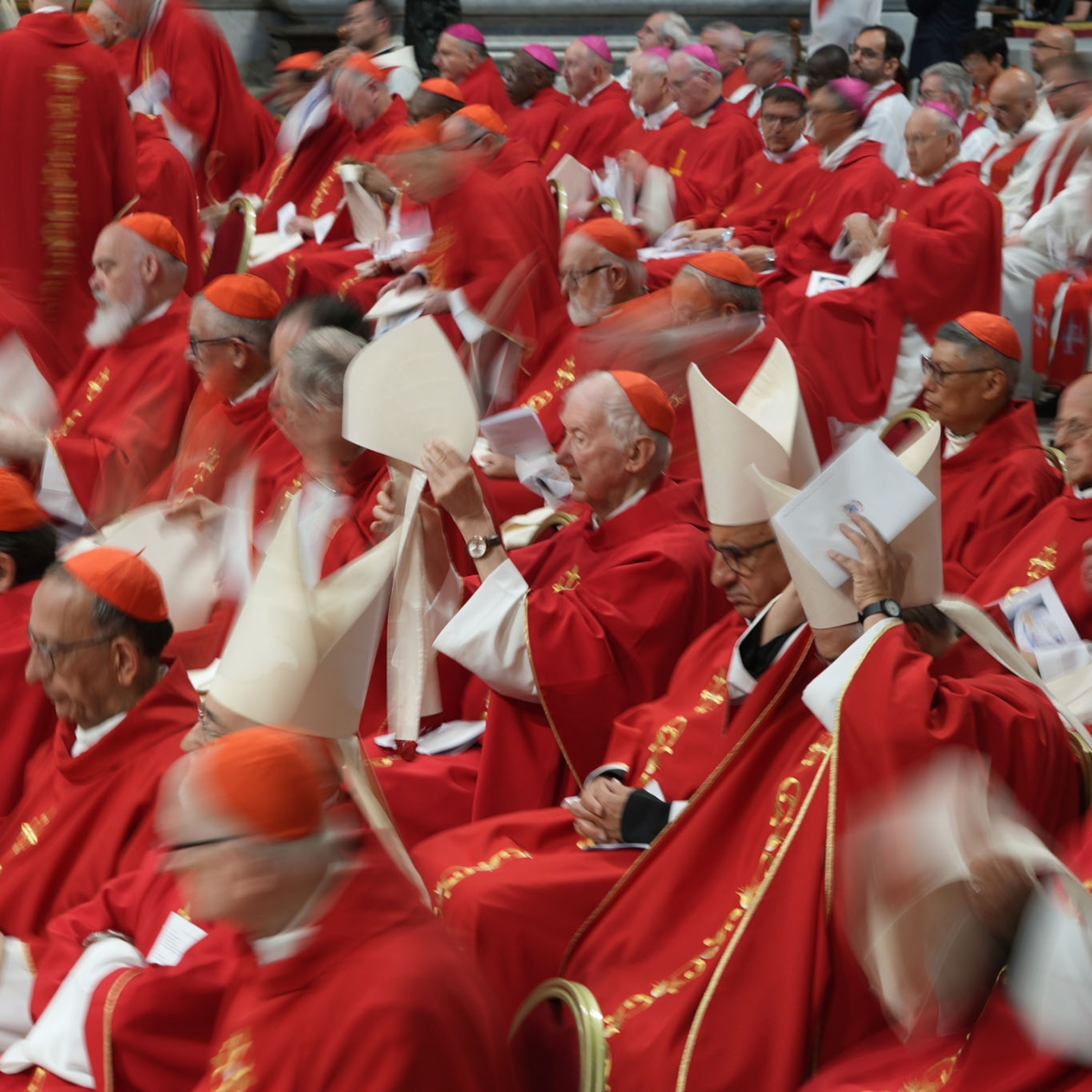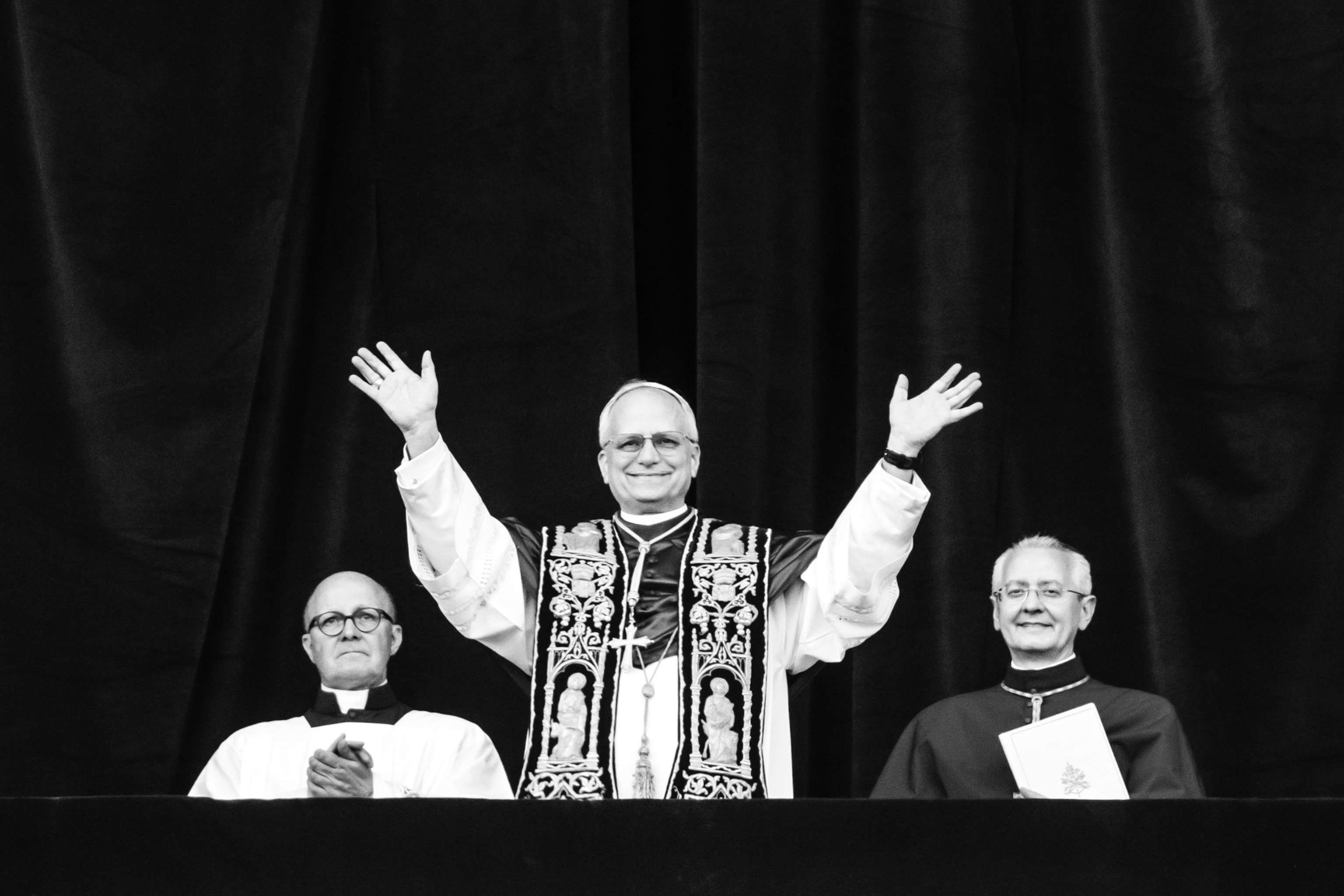
The first U.S. pope? Rome reacts to a once impossible scenario
After a relatively short conclave, our reporter was with the crowd in St. Peter's Square as they got their first glimpse of Pope Leo XIV. Now, Vatican insiders are guessing among themselves how much change to expect.
Vatican City — Amid the ancient pomp and ceremony of the Vatican, bathed in the gorgeous light of a Roman spring evening, former Cardinal Robert Prevost has emerged onto the balcony of St. Peter’s Basilica as the first U.S.-born pope in history. He has taken the papal name of Leo XIV—a name that the vast crowd in St. Peter’s Square took up with a spontaneous chant of “Le-on-e," the Italian version of the Latin Leo.
In the hour between the white smoke billowing from a chimney above the Sistine Chapel announcing that the 133 cardinal electors had made their choice shortly after 6 p.m. local time and Leo’s appearance on the balcony, the streets around the Vatican filled with hurrying crowds, including groups of excited young monks and nuns who gathered up their robes to break into a dignified run toward the square. Many well-wishers wore national flags draped on their shoulders, and some climbed on lampposts and onto the giant bases of pillars for a better view. Immediately in front of St. Peter’s, the primary cathedral of the Catholic world, an honor guard of Vatican Swiss Guards lined up with their traditional halberds, swords, and Renaissance uniforms, while a band from the Italian Army played.
(It's time for a conclave—and frugality is in, extravagance is out.)
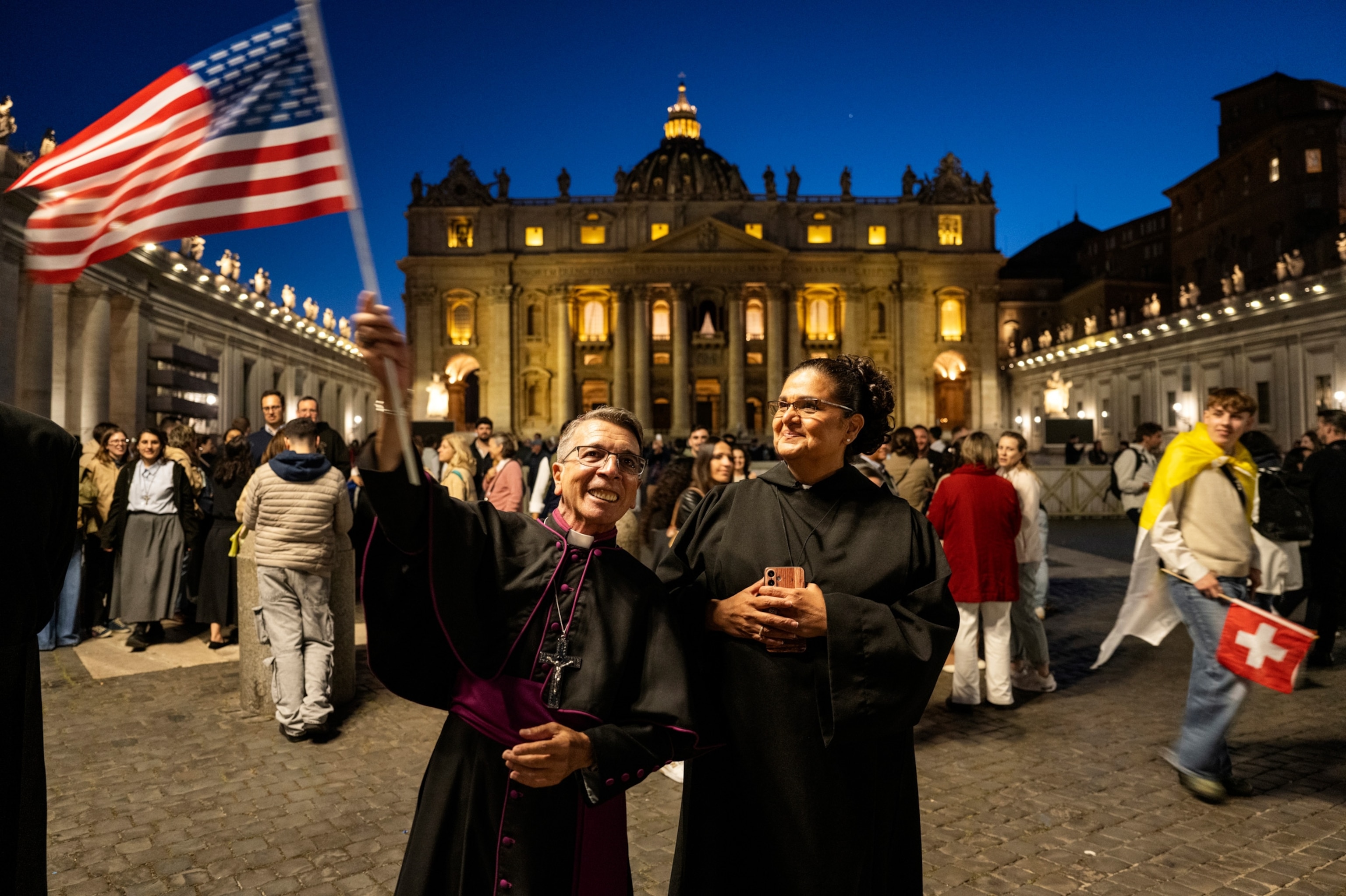
Prevost, 69, hails from Chicago, Illinois, and has spent much of his career in South America. He worked for 10 years as a missionary in Trujillo, Peru, and later served as bishop of Chiclayo, another Peruvian city. He has been a Peruvian citizen since 2015. Addressing the crowd in his first speech as Pope Leo, he thanked his predecessor Pope Francis and spoke of “uniting all people of the world in peace” and of creating “a church which builds bridges and opens its arms to the world—like this square.” The famous colonnade of St. Peter’s Basilica, designed by Gian Lorenzo Bernini, takes the form of a monumental open-ended stone embrace.
Leo made his speech in correct but slightly halting Italian but broke off into much more fluent Spanish to greet the people of Peru and thank his friends and staff there, drawing a groundswell of cheers from the Spanish speakers in the crowd.
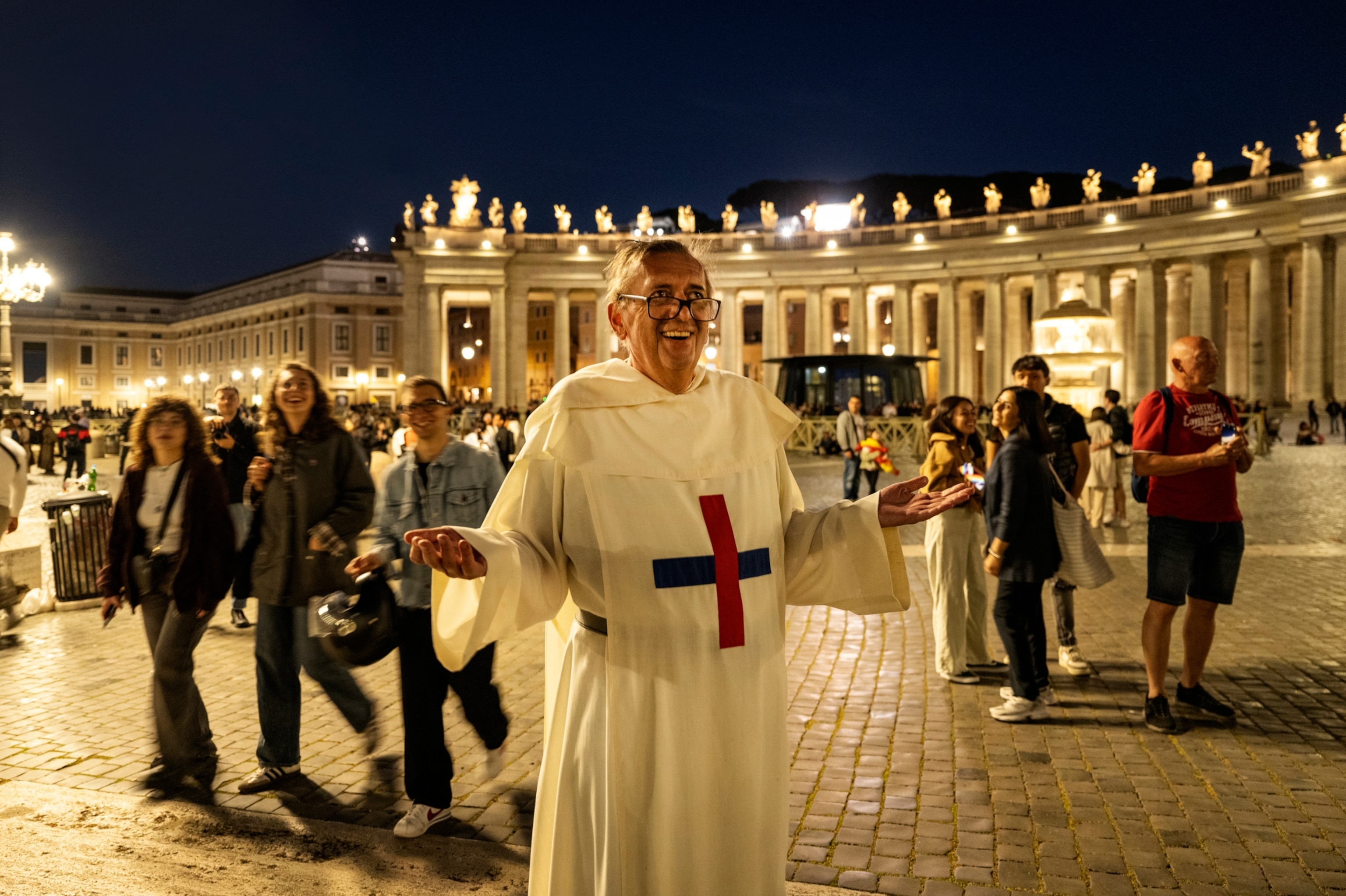

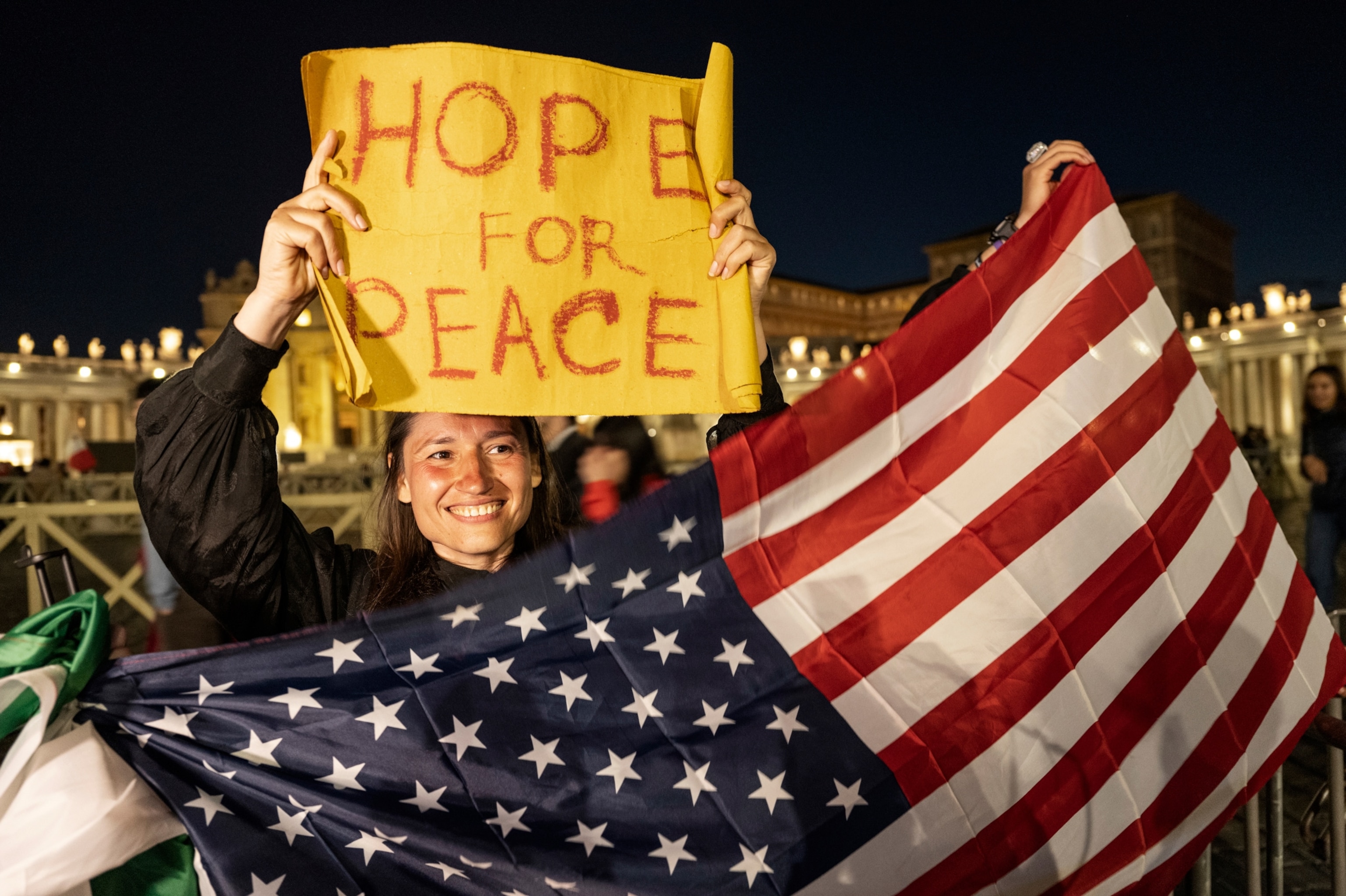
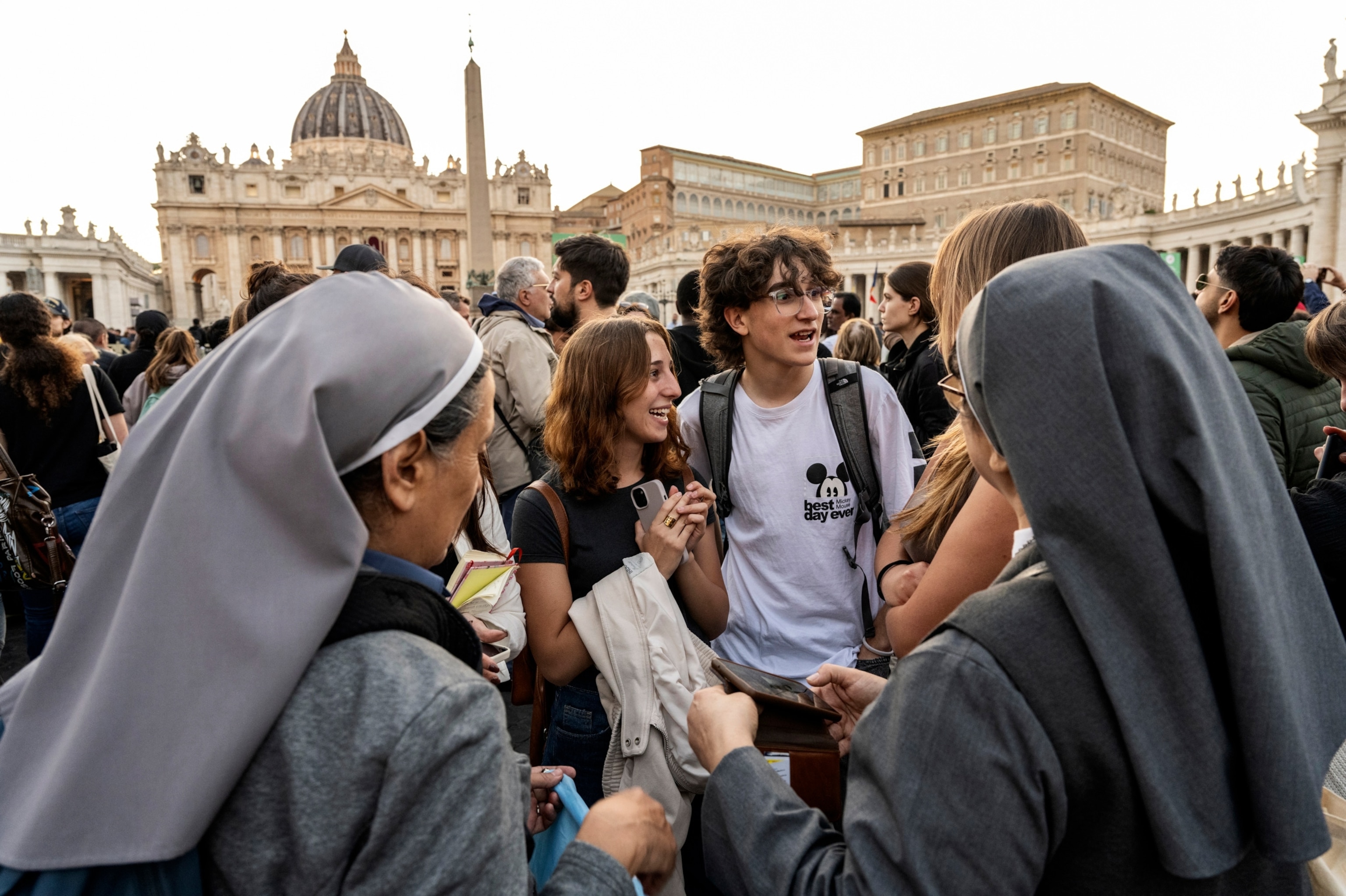
Cardinal Robert Francis Prevost is the 267th man to hold the office of pope and is the new leader of the world’s 1.4 billion Catholics. But like his predecessors Francis and John Paul II, he was a surprise choice. Prevost’s name had not been much mentioned as a papal front-runner. Indeed, betting companies had identified Vatican Secretary of State Pietro Parolin as a favorite, with Filipino Luis Antonio Tagle and Latin Patriarch of Jerusalem Pierbattista Pizzaballa as close runners-up. But confirming the old Italian saying that “he who enters the conclave a pope leaves as a cardinal,” those strong candidates were unable to win over the necessary two-thirds majority, leaving the field clear for a dark horse candidate such as Prevost.
Nobody seemed more overwhelmed by the surprise choice than Prevost himself, who seemed to struggle visibly with emotion as he stepped onto the balcony of St. Peter’s for his first papal blessing. As well he might, for footage shot from behind him showed a magnificent view of a cityscape bathed in extraordinary golden evening light and a sea of people filling St. Peter’s Square and all the way to the papal fortress of Castel Sant’ Angelo half a mile distant.
The new pope is “viewed as a centrist, a follower of [Pope] Francis,” says one veteran international diplomat who has worked with the Vatican for 20 years.
“He is progressive on social issues, and his work in Latin America has made him very popular in that part of the world.” Father Martin Browne of the Vatican’s Dicastery for Christian Unity finds the new Pope “humble, gracious and a good listener.”
Prevost was appointed cardinal by Pope Francis two years ago and, like his mentor, has long embraced marginalized groups. But Prevost criticized Pope Francis's 2023 declaration that allowed Catholic priests to bless couples who are not married, including same-sex couples, commenting that the ruling could compromise the church in parts of Africa where homosexuality is still illegal.
(Pope Francis ushered in a new era for the Church. See his work in photos.)


Leo is the second pope born in the Americas (Pope Francis was born in Buenos Aires, Argentina) and is only the third pope in history to be an Augustinian friar, one of the followers of the rule of the fifth-century St. Augustine of Hippo who are known for pastoral care, education, and missionary work. As the surname Prevost suggests, he is of French and Italian descent on his father’s side. Vatican News noted that his mother was of Spanish heritage, and The New York Times reported (and the pope's older brother confirmed) that his maternal grandparents had Creole roots in New Orleans, a city with a rich heritage of Afro-Caribbean culture. Leo has a bachelor’s degree in mathematics and a master’s in divinity, speaks English, Spanish, Italian, French, and Portuguese, and can read Latin and German.
A couple of major differences between Leo and Francis were immediately apparent, though. Francis broke the mold by choosing the hitherto unused name of a famously iconoclastic saint, Francis of Assisi. Leo, on the other hand, is a classic and conservative papal name (it means “lion” in both Latin and Italian). Leo’s Renaissance-era predecessor Leo X excommunicated Martin Luther in 1520 and is famous for the quote “Since God has given us the papacy, let us enjoy it,” as he appointed 30 of his allies cardinals in 1517. More relevant, though, is the last pope to bear the name Leo, who reigned from 1878 until his death in 1903 during a time of massive social change. Leo XIII was known as the workers’ pope for his encyclicals on workers’ rights and fair wages.
Another difference between Leo and Francis is in the choice of robes he made in the so-called Room of Tears, a dressing room just off the Sistine Chapel where newly elected popes have the choice of a selection of papal vestments. Francis, unusually, selected a plain white cape, known as a mozzetta. But Leo went back to tradition by choosing the more formal red-velvet, fur-trimmed mozzetta and a deep red, gold-embroidered stole that is draped around the neck.

It’s probably a mistake to read too much into Leo’s wardrobe choices, though the message that he is no revolutionary like his predecessor Francis is pretty clear. His most recent job has been in the Vatican, where he has headed a department that vets and appoints bishops, so he’s no stranger to the church bureaucracy—and church politics. Now, as Leo faces one of the most challenging jobs in the world, he has the prayers and goodwill of millions of well-wishers and the legacy of a popular and charismatic predecessor to buoy him–and to live up to.


